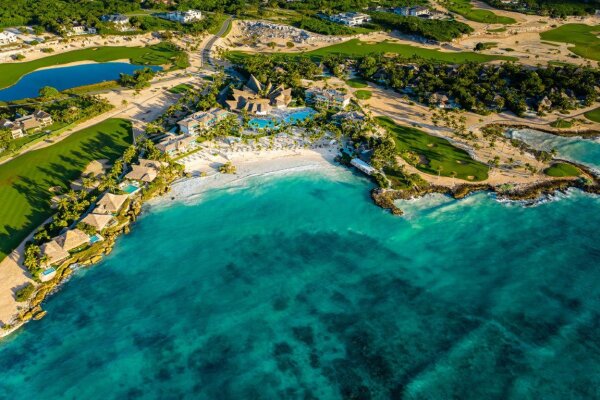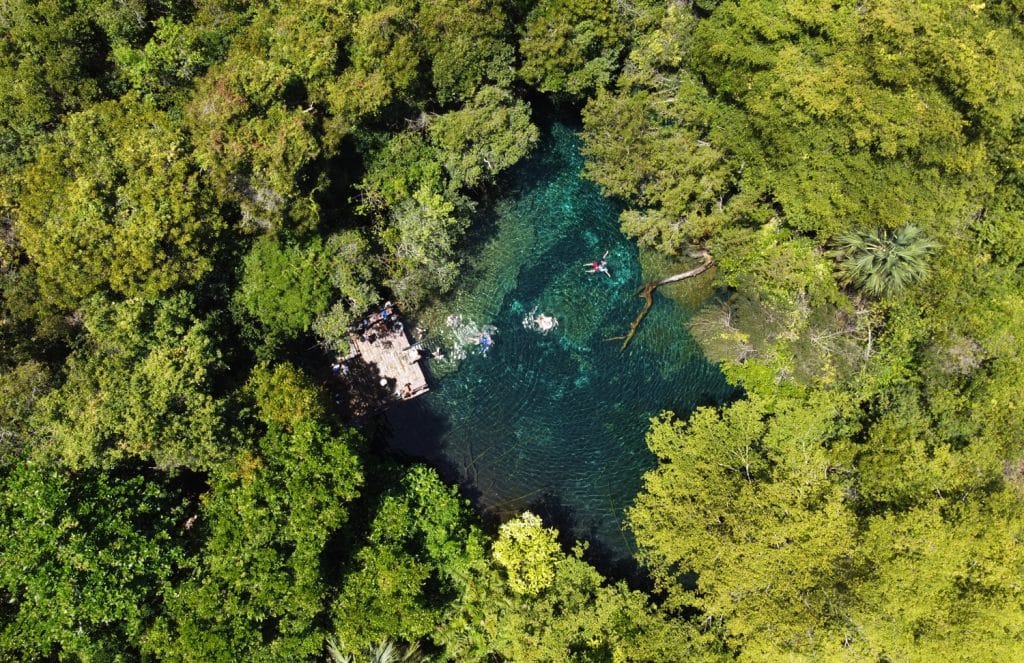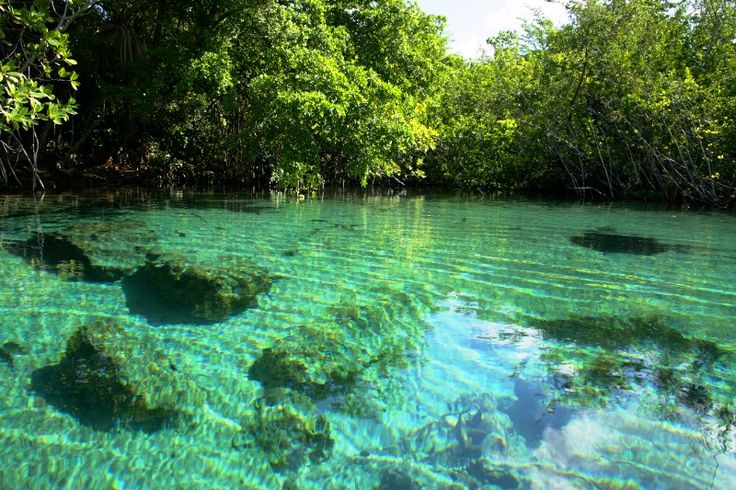Lagoons of the Ojos Indigenas Ecological Reserve
The Dominican Republic often conjures images of idyllic beaches, vibrant culture, and lush tropical landscapes, making it one of the Caribbean’s most sought-after destinations. Travelers from around the globe visit to unwind along golden sands, experience the rhythm of merengue music, and explore nature-rich treasures scattered across the island. While many head straight to the famous beach resorts, hidden just beyond Punta Cana’s bustling resorts lies a remarkable ecological gem that captures the essence of the island’s natural beauty: the Ojos Indígenas Ecological Reserve.
Tucked away in a serene sanctuary, the Ojos Indígenas Ecological Reserve is a tranquil haven characterized by crystal-clear freshwater lagoons, lush vegetation, and remarkable biodiversity. The name “Ojos Indígenas,” meaning “Indigenous Eyes,” perfectly illustrates the luminous, reflective quality of its pristine lagoons like sapphire-blue mirrors nestled within the tropical forest. Offering visitors an opportunity to immerse themselves in untouched nature, this reserve represents a refreshing departure from Punta Cana’s typical tourist paths. Whether you’re a nature enthusiast or simply seeking a peaceful escape, the lagoons of Ojos Indígenas promise an unforgettable experience in one of the Dominican Republic’s best-kept secrets.
Discovering the Reserve
The Ojos Indígenas Ecological Reserve is more than just a place of striking beauty, it’s also a sanctuary deeply rooted in Dominican culture and history. Owned and managed by the Grupo Puntacana Foundation, this protected area was established to conserve the region’s unique ecosystems, safeguard native wildlife, and celebrate the cultural heritage connected to these waters.
Brief History and Cultural Significance:
- Originally inhabited by the Taíno people, the indigenous inhabitants of Hispaniola, the area holds historical and spiritual significance.
- The Taíno revered these lagoons for their crystal-clear, freshwater sources, believing they possessed healing and life-giving properties.
- In recent decades, the reserve was officially protected to ensure this cultural treasure and its ecosystems remain preserved for future generations.
Why the Name “Ojos Indígenas” (Indigenous Eyes)?
- The name “Ojos Indígenas” translates directly to “Indigenous Eyes,” symbolizing how the lagoons resemble bright, reflective eyes scattered throughout the dense, green landscape.
- When viewed from above, the pools appear like shimmering turquoise eyes, each distinctly vibrant and seemingly alive.
Conservation Efforts and Importance of Preservation:
- Grupo Puntacana Foundation actively works on conservation initiatives, including habitat restoration, wildlife monitoring, and educational programs for both locals and tourists.
- Ongoing efforts focus on protecting native flora and fauna, maintaining water quality, and reducing environmental impacts from tourism.
- Preservation of the reserve ensures continued biodiversity, protects freshwater resources, and maintains cultural heritage, benefiting the local community and future generations alike.
Tips for Travelers Visiting the Reserve:
- Plan Ahead
- Check opening hours and make reservations if required.
- Consider visiting early in the morning for fewer crowds and more wildlife sightings.
- Pack Essentials
- Swimsuit, towel, and water shoes (terrain around the lagoons may be rocky).
- Eco-friendly sunscreen, insect repellent, reusable water bottles, and snacks.
- Respect the Environment
- Follow the marked trails to protect sensitive vegetation.
- Do not leave any trash behind—take all waste with you.
- Engage with Local Guides
- Take advantage of guided tours for deeper insights into the ecology, wildlife, and cultural history of the reserve.
- Guides can help identify unique wildlife and provide interesting local stories.
By understanding and respecting the historical, cultural, and environmental significance of Ojos Indígenas Ecological Reserve, travelers can fully appreciate this remarkable hidden paradise in Punta Cana.
The Magic of the Lagoons
The true magic of the Ojos Indígenas Ecological Reserve lies in its mesmerizing freshwater lagoons, each offering visitors an enchanting glimpse into untouched nature. Fed by underground springs, these lagoons are renowned for their pristine, crystal-clear waters that reflect vibrant shades of turquoise and emerald, creating a captivating spectacle unlike any other in Punta Cana.
Main Attraction: The Freshwater Lagoons
- The reserve contains 12 freshwater lagoons, of which several are easily accessible via marked trails.
- Visitors often describe swimming here as a rejuvenating and mystical experience, with waters that remain refreshingly cool and inviting year-round.
Accessibility and Biodiversity
- Five lagoons are typically open to visitors, each showcasing unique features:
- Crystal clarity allows visibility deep beneath the surface.
- Home to various species of freshwater fish, turtles, and amphibians.
- Surrounded by dense vegetation, providing shelter for diverse birdlife, including woodpeckers, hummingbirds, herons, and migratory species.
Experience the Natural Landscape Up Close
Visitors can explore the lagoons and the surrounding landscapes by:
- Walking along well-maintained paths winding through lush tropical forests filled with native palm trees, ferns, orchids, and dense undergrowth.
- Swimming or snorkeling in the designated lagoons to experience firsthand the refreshing waters and the vibrant aquatic ecosystem beneath.
- Observing wildlife quietly—listening to birdsong and watching for the occasional iguana or turtle basking along the lagoon edges.
Tips for Travelers:
- Swim Responsibly: Enter lagoons gently to protect delicate ecosystems. Avoid touching or disturbing wildlife.
- Photography Opportunities: Capture stunning underwater and landscape photographs early in the day when sunlight best illuminates the lagoons.
- Dress Appropriately: Bring comfortable walking shoes, water shoes, and attire suited for both hiking trails and swimming.
- Stay Quiet and Observant: Enhance your wildlife encounters by keeping noise levels low and movements gentle.
Immersing yourself in the magic of the Ojos Indígenas lagoons is more than just sightseeing it’s about connecting deeply with the purity and tranquility of nature.
Lagoon Highlights
Among the twelve enchanting lagoons at Ojos Indígenas Ecological Reserve, several stand out due to their unique characteristics, beauty, and visitor appeal. Here’s a closer look at three lagoons you shouldn’t miss during your visit:
1. Lagoon Yauya
- Unique aspects: Lagoon Yauya is known for its tranquil and secluded atmosphere, making it an ideal spot for visitors seeking peace away from busier areas.
- Size: Moderately sized, this lagoon provides an intimate setting that’s perfect for immersing yourself in nature.
- Surrounding vegetation: Lush tropical plants and towering trees envelop the lagoon, creating a canopy that offers pleasant shade and enhances the sense of serenity.
2. Lagoon Guamá
- Known for clarity: Guamá is famous for its extraordinarily crystal-clear waters, allowing you to see vividly to the lagoon’s bottom, where colorful fish swim freely.
- Wildlife spotting: Excellent for birdwatching and observing aquatic wildlife; look out for turtles sunning themselves on rocks, fish gliding through the water, and a diverse array of birdlife nesting in nearby trees.
3. Lagoon Turey
- Popular for swimming: Turey is the largest and most visited lagoon, beloved by travelers for its spacious swimming area, easily accessible entry points, and calm, inviting waters.
- Ideal for relaxation: Surrounded by picturesque scenery, it provides ample space along its shorelines for visitors to relax, unwind, and connect with nature.
- Photography-friendly: Known for its photogenic beauty, Turey attracts photographers seeking the perfect snapshot of turquoise waters reflecting lush greenery, sunlight sparkling through leaves, and happy travelers enjoying its refreshing waters.
Visiting these lagoons offers distinct yet equally magical experiences, highlighting the rich diversity and beauty found throughout the Ojos Indígenas Ecological Reserve.
Activities and Experiences
Ojos Indígenas Ecological Reserve isn’t just a place to admire it’s a place to immerse yourself fully in nature through various engaging activities. Whether you’re interested in swimming, exploring on foot, or observing wildlife, the reserve offers unique ways to experience its incredible biodiversity.
Swimming and Snorkeling
- Guidelines:
Swimming and snorkeling are allowed in designated lagoons. Visitors are encouraged to enter the lagoons gently to preserve their delicate ecosystems. - What to Expect:
Clear, refreshing freshwater that offers excellent visibility beneath the surface, revealing vibrant aquatic life and underwater vegetation. - Tips:
- Bring your snorkel gear, as rentals might be limited.
- Enjoy swimming quietly to spot more wildlife around you.
Nature Trails and Guided Tours
- Nature Trails:
The reserve features marked walking paths, clearly labeled with signs, guiding visitors through the lush tropical landscape and between the lagoons. - Guided Tours:
Knowledgeable local guides offer deeper insight into the ecology, history, and biodiversity of the reserve, enriching your experience. - How to Book:
Guided tours can typically be reserved directly through the Ojos Indígenas Ecological Reserve entrance or booked in advance online or via local tour operators.
Wildlife Watching
The reserve is a paradise for wildlife enthusiasts, offering an impressive range of species to discover:
- Birds:
Visitors frequently spot hummingbirds, woodpeckers, herons, egrets, and migratory birds resting or nesting among the reserve’s tall trees and dense vegetation. - Reptiles and Amphibians:
Look for turtles basking in the sun at the lagoon edges and iguanas camouflaged among rocks and foliage. - Fish and Aquatic Life:
Underwater explorers can observe freshwater fish species gliding beneath the lagoon’s calm surface. - Flora:
Tropical palms, orchids, ferns, and various native plants create a vibrant, lush setting along trails, enhancing the magical atmosphere of the reserve.
These diverse activities at Ojos Indígenas Ecological Reserve enable travelers to experience Punta Cana’s natural beauty unforgettably and engagingly, highlighting the area’s exceptional ecological value.
Practical Information for Visitors
Planning a visit to the Ojos Indígenas Ecological Reserve? Here’s essential information to ensure a smooth and enjoyable experience:
Entry Fee, Reservation Policy, and Hours of Operation
- Entry Fee:
- General Public: The entrance fee is $50 per person.
- Guests of Associated Hotels: Visitors staying at The Westin Puntacana Resort & Club, Four Points by Sheraton Puntacana Village, and Tortuga Bay Hotel may have discounted or complimentary access. It’s advisable to confirm with your hotel regarding any special arrangements.
- Reservation Policy:
- Individual Visitors and Small Groups (fewer than 10 people): Reservations are not required.
- Large Groups (10 or more people): Reservations are mandatory and should be made at least 24 hours in advance.
- Hours of Operation:
- The reserve is open daily from 8:30 a.m. to 5:00 p.m., with the last authorized entry at 4:30 p.m
Best Time to Visit: Seasonal Considerations, Weather, and Crowds
- Peak Season (December to April):
- This period offers ideal weather conditions with low humidity and minimal rainfall, making it perfect for outdoor activities.
- However, it’s also the busiest time, so expect larger crowds.
- Shoulder Seasons (May to June and November):
- These months provide a balance between favorable weather and fewer tourists.
- While there’s a slight increase in rainfall, showers are typically brief, and the reserve is less crowded.
- Green Season (July to October):
- Also known as the rainy season, this period sees higher humidity and a greater chance of rain.
- Despite this, the reserve remains lush and vibrant, offering a unique experience with fewer visitors.
Essential Items to Pack
To make the most of your visit, consider bringing the following items:
- Swimsuit and Towel: For swimming in the lagoons.
- Eco-Friendly Sunscreen: Protect your skin while minimizing environmental impact.
- Insect Repellent: To guard against mosquitoes and other insects.
- Comfortable Walking Shoes: Suitable for navigating nature trails.
- Water Shoes: Useful for entering and exiting the lagoons safely.
- Reusable Water Bottle: Stay hydrated during your exploration.
- Camera: Capture the breathtaking scenery and memorable moments.
By keeping these details in mind, you’ll be well-prepared for an unforgettable experience at the Ojos Indígenas Ecological Reserve.
Responsible Tourism
Preserving the natural beauty and ecological integrity of Ojos Indígenas Ecological Reserve depends greatly on visitors practicing responsible tourism. By adopting simple ecological best practices, each traveler can help protect this extraordinary place for generations to come.
Protecting and Respecting the Reserve:
- Stay on Designated Paths:
Stick to marked trails to avoid disturbing wildlife habitats and delicate plant life. - No Littering:
Always carry out any waste you produce, leaving nothing behind to maintain the pristine condition of the reserve. - Respect Wildlife:
Observe animals from a distance without feeding or touching them, allowing wildlife to remain undisturbed in their natural environment. - Avoid Chemicals:
Use eco-friendly sunscreen and insect repellent to prevent contamination of the lagoons’ delicate aquatic ecosystems.
Supporting Local Conservation Efforts:
Travelers can actively contribute to local sustainability initiatives in several meaningful ways:
- Visit Officially Managed Areas:
Entry fees directly support the Grupo Puntacana Foundation’s environmental conservation programs and ongoing reserve management efforts. - Join Educational Programs:
Participate in guided tours and conservation workshops provided by local guides and organizations, helping to raise awareness about environmental stewardship. - Support Local Initiatives:
Purchase eco-friendly, locally produced souvenirs or products, thereby empowering local communities and conservation projects economically.
The freshwater lagoons at the Ojos Indígenas Ecological Reserve offer travelers an extraordinary escape into the untouched heart of Punta Cana. From crystal-clear swimming spots and diverse wildlife to the serene, verdant beauty of its trails, the reserve is a natural haven that captures the spirit and essence of the Dominican Republic.
As you explore this hidden paradise, remember your role as a responsible visitor; each action can help preserve the area’s fragile beauty. Enjoy every moment sustainably, knowing you’re contributing positively to the preservation of one of Punta Cana’s most treasured natural wonders.












